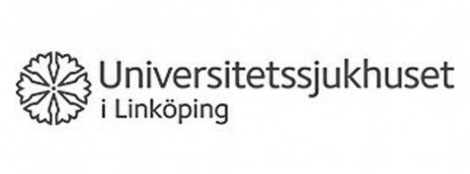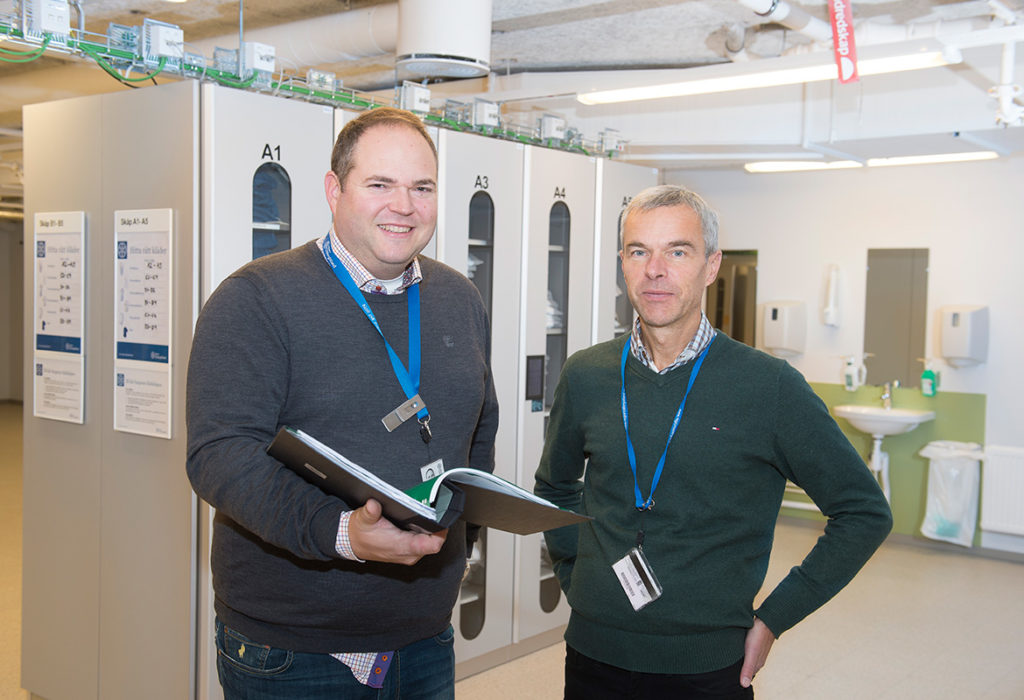
- Linköping University HospitalThe choice fell on textile cabinets from Texi AB, mainly on the grounds that they are flexible; that you can move the cabinets around, and they are very space efficient.
It is flexible, space-efficient, and means that we have an increased turnaround of work clothing.
These are the foremost advantages listed by the FM (Facility Management) Centre in Östergötland after the change to the textile logistics solution from Texi AB for the management of personnel’s workwear at the University Hospital in Linköping.
The University Hospital in Linköping began to use textile cabinets from Texi AB, just over a year ago, in conjunction with a major renovation of the hospital. Textile cabinets (Texi Dispenser Cabinets) are part of the textile logistics solution that Texi delivers.
During the renovations, the changing rooms in the vicinity of each ward were moved to the basement levels.
“You are always overcrowded in a hospital. We investigated what was available on the market, and looked at what our premises could handle. The choice fell on textile cabinets from Texi AB, mainly on the grounds that they are flexible; that you can move the cabinets around, and they are very space efficient. You can supply many people in a small area,” says Robert Nilsson at the FM Centre.
Before the renovation, there was clothing storage for each department in the hospital. Now the majority of these changing rooms have been reduced down to three key clusters of changing rooms:
“One advantage of this arrangement is that the cabinets are close to the employees who will use the clothes. The cabinets for both withdrawal and return of clothing are located centrally. Of course, this change has been positive even from an economic perspective. Previously, an employee in each department worked with ordering and ensuring that there were available clothes. This has taken an estimated average of 2.5 hours per week. Now there’s certainly more work in three places, but overall there is a huge time-saving with our new way of managing clothes,” says Nilsson.
Region Östergötland shares their clothing stock with Region Jönköping. All clothes are washed in-house at TvNo Textil Service AB in Norrköping (owned jointly by the Region Östergötland and Region Jönköping ). Laundries ensure that the clothes have the right quality:
“Textile cabinets gives us a higher rate of circulation of clothing. This means that we need fewer textiles in circulation. Previously, some clothes turned into “shelf warmers” in each ward. Now, clothes are put to full use, albeit in a different way due to them being used more diligently and being replaced more frequently. But it also means that we have better control and have a more flexible clothing supply,” says Lars Gustafsson at the FM Centre.
With the transition to Texi’s logistics solution, the clothes that the employees have to choose from has been limited. Now, employees can choose from trousers with elasticated waists; straight leg trousers; personnel shirts; polo-shirts; dresses and coats (in addition, surgical clothing in the form of tunics and trousers are available).
“Previously, certain departments had their clothes labelled with their department name. This was associated with huge costs for both printing on the clothes, but above all, for the printers to sort clothes. Now we have a standardised supply. The staff have been positive about this change, they know that their clothes are always accessible in the cabinets. This means that there is no need to stock up clothes, that is to say, pick out all the clothes they need for the week. It’s positive from a hygienic perspective and reduces the risk of clothes being “tied” up and not used,” says Robert Nilsson.
A refurbishment of Vrinnevis Hospital in Norrkoping is currently under way and when it is finished they will use Texi’s logistics solution for workwear.
University Hospital in Linköping
- 40,000 patient visits/year
- 600 beds
- 5,500 employees – 3,500 of those pick up their clothes from the textile cabinets
How it works:
- The user scans their personal access card to open the textile cabinet
- Assortment and sizes are shown on the door of the cabinet
- The withdrawal is registered and charged to the user’s account
- When the clothes are returned to the return unit, the user account is credited
This provides
- Complete control over all workwear
- The right workwear in the right place at the right time
- Automated ordering processes
- Minimised waste
- Space saving
- Increased turnaround of clothing, they don’t become “shelf-warmers”
- Hygiene optimisation of textiles
- Operational reliability – during a power failure the cabinets open automatically
- Hospitals can focus on their primary task
